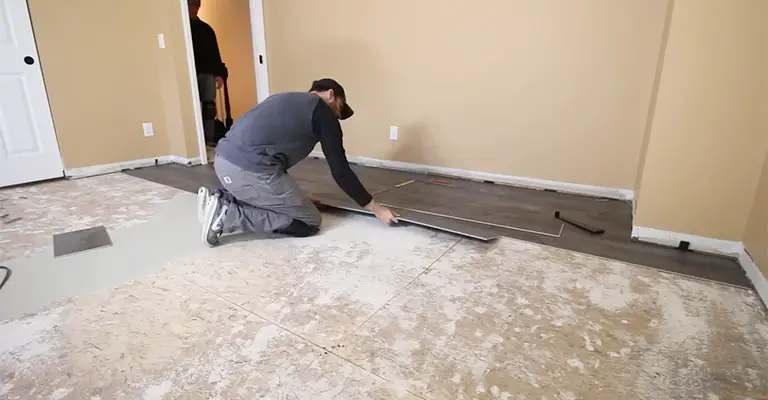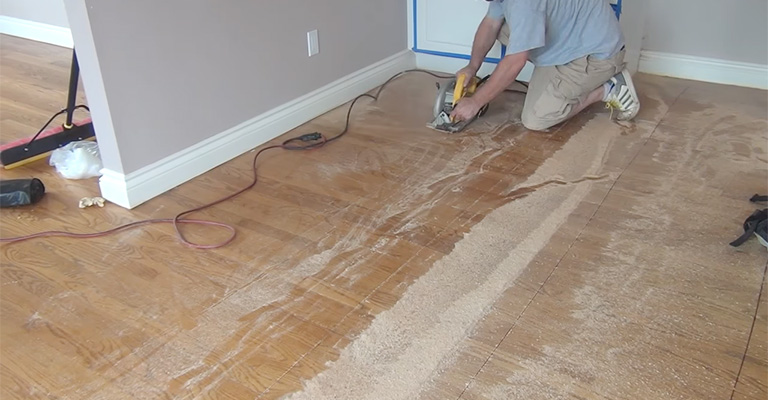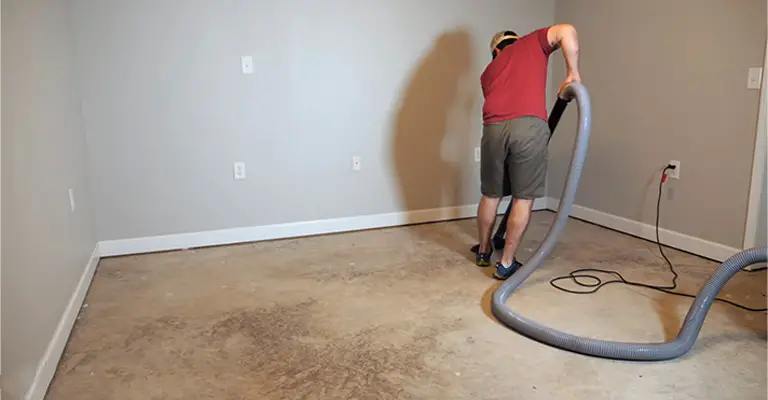Changing the flooring in your home can be a significant upgrade, enhancing both the aesthetics and functionality of your living space.
However, the requirement for obtaining a permit to undertake this seemingly straightforward task can vary depending on a multitude of factors, including your location, the type of flooring you’re installing, and local building codes.
Do You Need A Permit For New Flooring?
Permits aren’t usually required when it comes to interior cosmetic changes like new carpet, hardwood flooring, painting, paneling and installing trim like crown molding, baseboard and casing.
Most people are aware that home improvement projects are subject to a wide range of laws, regulations, and ordinances.
Making improvements to your home means considering design and decor options, paint colors, whether the project increases the value of your property, or whether you’ll need help.
It is common for contractors to need a permit before they start working on a project. Despite this, flooring installation is not one of them.
New flooring can be installed in your home without a permit. The installation of stone, tile, or similar materials on a second floor would be an exception.
There are a number of updates and improvements that you can perform without a permit. You can remodel your home in many different ways, including installing new flooring, painting, wallpapering, and replacing faucets.
If the work will have a significant impact on the property’s appearance or will pose a significant threat to the safety of the home, a permit is required.
It is necessary to obtain a permit for many projects. Some examples are heating, air conditioning, fencing, electrical work, and windows and skylights.
Building permits are required for major remodeling, additions, decks, porches, balconies, roofing, foundations, and roofing repairs.
It is also necessary to obtain a permit for major landscaping, but simply planting flowers won’t need one. If you plant vines or trees, they shouldn’t be a problem, but you need to be aware of their spread and size once they reach maturity.
In order to obtain the proper permits for major landscaping work, the contractor should be familiar with the applicable standards and requirements.
The changes you make to your home do not require a permit if you’re simply installing new carpeting or flooring. Regardless of your decorating preferences or requirements, you can choose any kind of flooring you like.
Exception
The only exception is if you plan to install heavier types, such as tile, marble, or stone, on a higher floor.
These materials are heavier than most homes, so the structure will need to be modified significantly to be able to support them.
When A Permit Might Be Required

For homeowners, knowing what projects require approval and the potential consequences of not getting it is essential.
To avoid costly mistakes, make sure you understand the ins and outs of building permits before you begin tinkering with electrical wiring or tearing down walls.
The design, location, and extent of exterior work will determine whether or not a permit is required for decks, trees, fences, and retaining walls.
A permit may or may not be required for exterior work such as siding repairs and painting, depending on your community’s rules.
A permit was historically not required for replacements of light fixtures, plumbing fixtures, and appliances, but now may be required in some cases.
The installation of a new fireplace, for instance, requires a permit. Documentation of compliance with stringent EPA standards is required for wood-burning fireplace applications.
Why Get A Permit?

Those who do not comply run the highest risk of bodily harm. A fully exposed electrical wire was discovered under a steel bathtub during a bath remodeling project.
It was placed there by a previous homeowner, so it’s easy to imagine how electrocution could have resulted from this DIY job.
Failing to obtain a required permit can also have less severe consequences.
Almost every real estate agent has a story about how improperly permitted work affected a home sale. The lack of agreement between the home’s reported and recorded square footage is a red flag that can negate a home sale.
Obtaining a permit retroactively can be a costly endeavor involving demolition and repeated work steps.
In the event that you complete work without the required permits, you may be facing fines, lawsuits, or other legal troubles.
The First Rule
Regardless of how obvious it may seem, always consult your local jurisdiction if you are unsure. It is impossible for me to overstate the importance of this; even professionals can be surprised by the inconsistencies of local building departments.
Burbank’s standards might seem laughable to someone living in Wyoming’s rural outskirts. Don’t hesitate to ask if you’re not sure.
The Second Rule
The rules of construction change over time. There is usually a gradual increase in stringency and comprehensiveness of requirements even within a given jurisdiction over time.
There is no set rule for planning conditions, energy-efficiency requirements, and local interpretations of building code guidelines.
Your most responsible course of action will be to contact your local building and planning departments.
Who Gets The Building Permit?
It is likely that the contractor who completes the project will obtain the permit. As a result, the person or company that pulls the permit is usually the one responsible for checking that the project is up to code.
Your local government will consider you the contractor if you pull the permit yourself, so you will be liable for any construction problems.
Final Words
You need to be as specific as possible when defining the scope of your project. The process may be straightforward. The addition of crown molding to a repainted bedroom would almost never require a permit.
Nevertheless, it is recommended that you consult a professional or your local building authority if you are considering work that requires an uncertain permit.








